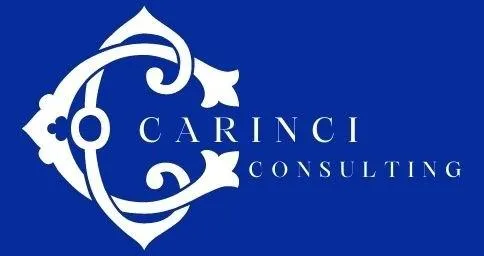
LOI, RFP, NOFO... OMG: Decoding the Alphabet Soup of Grant Applications
"The single biggest problem in communication is the illusion that it has taken place." — George Bernard Shaw
If you've ever opened a grant application and wondered if you accidentally stumbled into a foreign language exam, you're not alone. LOI? NOFO? CFDA? It can feel like you need a secret decoder ring just to figure out where to start.
This blog is your nonprofit-friendly guide to decoding the most common (and confusing) grant-related acronyms and terms—so you can focus less on Googling and more on funding.
Why This Matters: Misunderstanding = Missed Opportunity 💡
When nonprofits misinterpret application instructions or skip steps due to jargon confusion, it can lead to disqualification—or worse, a great idea that never gets funded. Funders aren’t trying to be cryptic, but their world is full of terms that don’t always come with built-in explanations.
So, let’s break down the key terms you’re likely to encounter (and demystify the alphabet soup along the way).
NOFO: Notice of Funding Opportunity 📣
A NOFO (also called an FOA—Funding Opportunity Announcement) is the government’s formal announcement that a grant is available. It outlines everything: eligibility criteria, funding priorities, submission instructions, deadlines, and scoring rubrics. Think of it as the grant’s instruction manual.
🔗 See examples at Grants.gov
Why it matters: NOFOs are often long (30–100 pages), but skipping the details can mean submitting a non-compliant or non-competitive proposal.
LOI: Letter of Inquiry or Letter of Intent 📝
An LOI is a short summary—usually 1–2 pages—submitted before a full proposal. Foundations often use it to screen projects before inviting full applications.
🔗 See sample LOIs from The Foundation Center
Why it matters: A well-crafted LOI is your ticket to the main event. Think of it like a movie trailer—it should intrigue, inform, and align your project with the funder’s interests.
RFP: Request for Proposals 🔍
An RFP is issued by a government agency, foundation, or corporation when they want to receive proposals on a specific topic or problem. It’s similar to a NOFO but often used in private-sector or contract-based funding.
Why it matters: RFPs tend to be more directive and may include scope-of-work outlines, expected deliverables, and a proposal evaluation process.
CFDA/Assistance Listing Number 🔢
The CFDA number (now referred to as the Assistance Listing Number on SAM.gov) is a five-digit code assigned to each federal program. You’ll find it in NOFOs and federal grant records.
Why it matters: You’ll often need this number to register or apply on federal platforms like Grants.gov and SAM.gov, and to ensure you’re applying under the correct funding stream.
DUNS & UEI: Unique Identifiers for Your Organization 🏛️
The DUNS number was phased out in 2022 and replaced by the Unique Entity Identifier (UEI), which is now required for all federal grant applications.
🔗 Get your UEI through SAM.gov
Why it matters: Without a UEI and active SAM.gov registration, you can’t apply for federal funding. It’s step zero in the grants process.
SAM.gov: System for Award Management ✅
SAM.gov is where you register your organization to do business with the U.S. government. Registration must be renewed annually.
🔗 Learn how to register at SAM.gov
Why it matters: An expired or incomplete SAM registration will block your submission on Grants.gov—even if your proposal is otherwise perfect.
Budget Narrative vs. Budget Justification 💰
These terms are sometimes used interchangeably, but they serve the same function: to explain why your budget numbers make sense.
Why it matters: A strong budget narrative helps funders trust that you’ve done your homework. Without it, they may question your project’s feasibility.
Indirect Cost Rate (IDC) or Facilities & Administration (F&A) Rate 🏢
These are percentages added to your grant to cover overhead—things like rent, admin time, and IT support. If you don’t have a federally negotiated rate, you may be allowed to use a de minimis rate of 10%. Be sure to check each funder’s specific guidelines for indirect rates, as some federal funders have recently lowered allowable indirect cost rates and some foundations do not allow indirect costs.
🔗 Learn more from the Office of Management and Budget (OMB) Guidance
Why it matters: If you don’t claim indirect costs, you’re leaving money on the table. If you overclaim, your proposal could be rejected.
Appendices, Attachments, and Exhibits 📎
These include supplemental materials like résumés, letters of support, logic models, and organizational charts.
Why it matters: Attachments are not optional unless stated. Missing even one required file could disqualify your application.
Pro Tip: Create a “Grant Glossary” for Your Team 🧠
If your internal team is involved in proposal development, it’s worth creating a shared glossary of commonly used grant terms and acronyms. This ensures clarity, reduces communication errors, and speeds up onboarding for new staff or collaborators.
Speak Funders' Language, Win Funders’ Trust
Grant writing shouldn’t feel like decoding ancient hieroglyphs. Once you understand the language of funding, you can respond with confidence, clarity, and precision. Whether it’s an LOI to a foundation or a 70-page NOFO from the Department of Education, being fluent in funder-speak puts you ahead of the competition.
Want help navigating grants alphabet soup?
At Carinci Consulting, we help nonprofits navigate the complex world of grant funding—without the jargon overload. Need help decoding an RFP, crafting a killer LOI, or building a grants strategy that makes sense of the chaos? Let’s chat.
🗓️ Schedule a complimentary strategy session.
Have questions? 📨 Email us at jennifer@carinciconsulting.com.
Office: Lexington, SC
Site: www.carinciconsulting.com

Call: 302-383-4724
Email: jennifer@carinciconsulting.com


